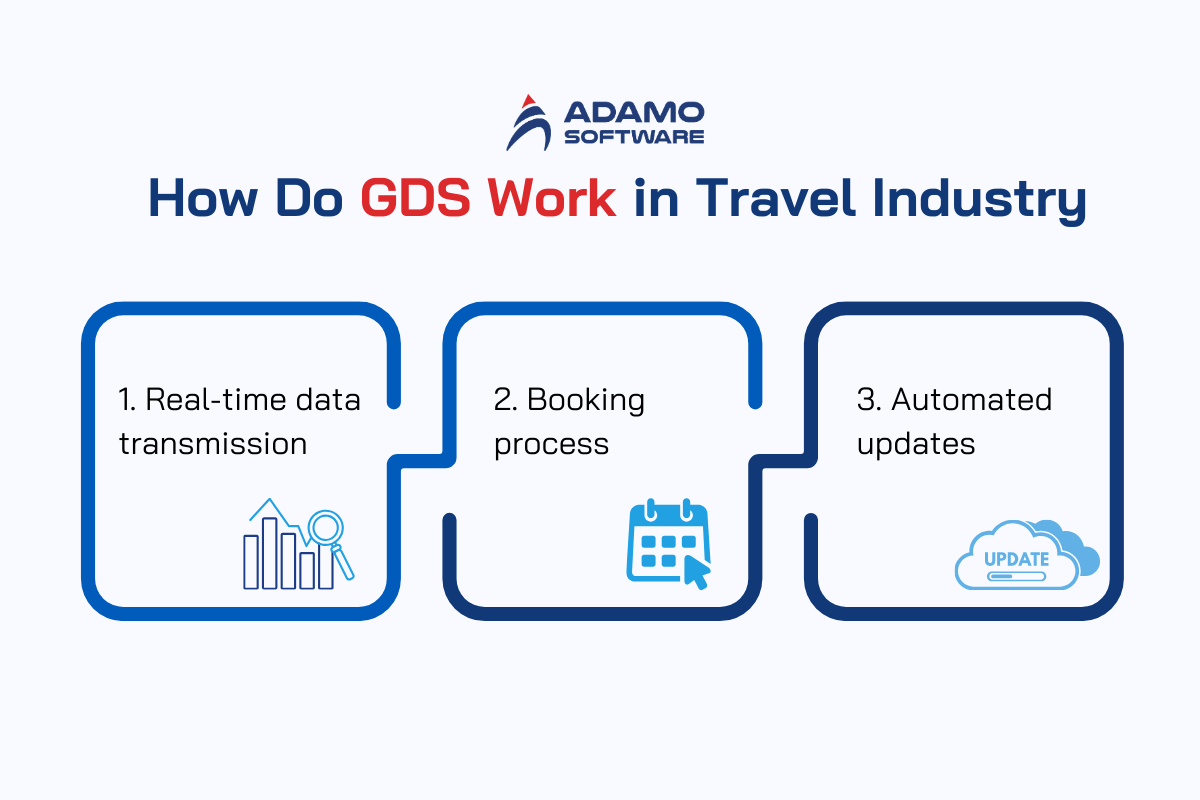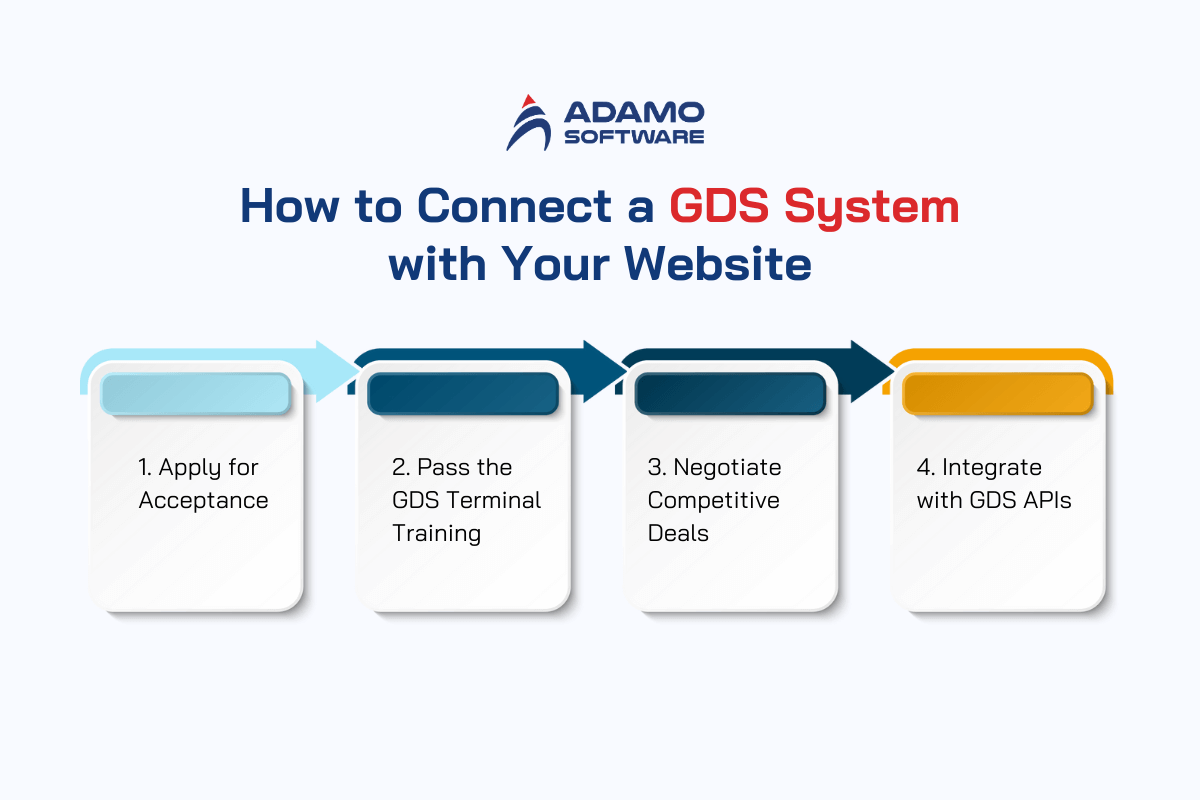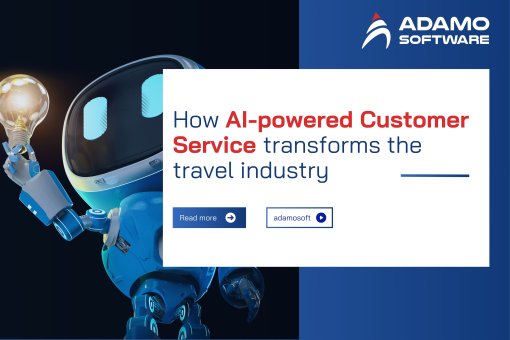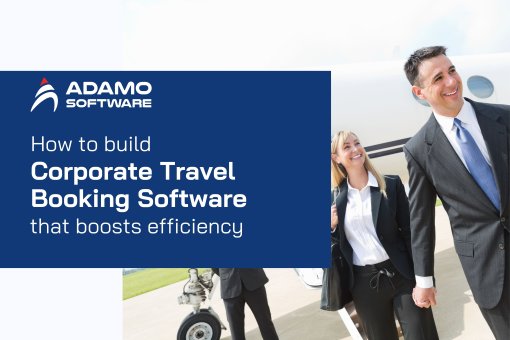GDS System: How to Connect All from Airlines to Hotels

As of 2024, the Global Distribution System (GDS) in the travel industry is experiencing significant growth. The global travel technology market, which includes GDS system was valued at USD 8998.92 million in 2023. It is projected to grow at a CAGR of approximately 8% over the next decade, potentially reaching a valuation of USD 13 billion by 2033.
Specifically, the GDS segment is expected to grow at a CAGR of 6.1% from 2023 to 2033.
These trends highlight the strong growth anticipated in both the GDS and broader travel technology markets. Key factors driving these trends are the increasing preference for online travel bookings, advancements in technologies like AI and IoT, and the overall expansion of the travel and tourism industry.
So, how can you connect your website with this powerful tool? Let’s find out.
I. Why GDS System is Important for Travel Business
The GDS system plays a vital role in the travel industry as it communicates live product information, pricing, and availability data to travel agencies and online booking engines, enabling automated transactions.
GDS is a computerized network system that provides real-time information to companies like airlines, hotels, car rental providers, and travel agents. These advanced solutions and travel software allow travel companies to expand rapidly on a global scale.
GDS system is widely responsible for the growth of the travel industry and serves as the foundation for many internet-based travel services.t increase in their use among travel businesses. A GDS is important, especially when combined with additional smart add-ons to further enhance its capabilities.
Independent travel agents, OTAs, and tour operators are more and more using GDS system to offer their clients the best travel deals, accommodations, and airfares. Agents can make real-time airline and hotel reservations for customers, completing research and bookings within minutes.
With a GDS, travel agents receive faster updates and availability information so that they can facilitate bookings, generating more reservations through the GDS than directly on a property’s website.
A GDS system also displays information such as room availability and daily rates in travel agencies. When this information is updated in real-time, it helps agencies secure more reservations, so that increased bookings and revenue for accommodations.
II. How Do GDS Work in Travel Industry
The GDS system acts as a mediator between travel agents and central hotel (or airline) reservation systems, which allows travel agents to view real-time rates and availability for specific hotels.

_ Real-time data transmission: Firstly, the hotel’s property management system (PMS) sends current rates and availability data to the GDS and online booking platforms via a channel manager.
_ Booking process: When a reservation is made through the GDS or an online booking site, the channel manager instantly updates availability across all channels, including the hotel’s official website.
_ Automated updates: The booking details then are automatically transmitted back to the PMS or central reservation system (CRS), so travel agents don’t need to directly contact hotel staff or for reservation agents to manually enter data.
Wonder how to integrate GPS API with other platforms, let check the blog about GDS Integration here.
III. Most Popular GDS System – Which is the Best
When it comes to GDS system, many players contribute to the travel industry’s advancement.
Here is the top 3 GDS system that create significant impact in travel industry:
1. Amadeus
Amadeus is a leading global travel technology company renowned for its diverse services. It facilitates seamless connections between travel providers and agents, offering instant access to information and simplifying reservations.
Besides, Amadeus provides tools that enhance travel agency operations and improve customer experiences. It stands out as a core provider of efficiency and convenience in the travel sector.
2. Sabre
Sabre is another key player in the GDS world, offering travel agencies a variety of tools and solutions through its advanced platform. With Sabre GDS system, travel businesses will easily access booking of plane tickets, hotels, rental cars, and personalized tours.
Also, Sabre’s expertise extends beyond travel agencies to airlines, hotels, and other service providers, which offer custom technology solutions.
3. Travelport
Travelport is another global GDS system that must be considered. This platform helps travel agents find and book various travel services more easily.
Travelport offers a wide range of options, from flights and hotels to car rentals, catering to diverse client needs. Also, it provides robust tools and solutions for airlines, hotels, and service providers, helping them sell and distribute their products effectively, thus boosting growth and profits in the competitive travel and tourism sector.
Amadeus vs Sabre vs Travelport
| Feature | Amadeus | Sabre | Travelport |
| API Access | RESTful APIs, GraphQL in beta, strong OpenAPI documentation | SOAP and REST APIs, extensive developer portal with code samples | RESTful APIs, focus on simplicity and ease of integration |
| Programming Languages | Java, Python, C#, Node.js, PHP | Java, C#, Python, .NET, JavaScript | Java, Python, C#, Ruby |
| Development Tools | Extensive SDKs, code generators, sandbox environments | Developer Hub with tools and libraries, API Explorer | Easy-to-use API browser, Swagger documentation generation |
| Learning Curve | Steeper for beginners, requires deeper understanding of travel data formats | Moderate learning curve, well-established technologies | Gentle learning curve, focus on developer usability |
| Flexibility | Open APIs with NDC focus, allows customization and innovation | Blend of open and proprietary APIs, strong on data analytics tools | Relatively closed APIs, more limited customization options |
| Community & Support | Active developer community, forums, conferences | Extensive documentation, dedicated developer support team | Growing developer community, good documentation, technical support |
| Pricing | Pay-per-use or subscription based, variable costs depending on API usage | Tiered pricing based on volume and functionality | Transaction-based pricing model, generally more affordable for smaller projects |
GDS system is unparalleled in terms of global travel distribution networks. However, they come with various challenges, such as demanding specifications, lengthy confirmation procedures, and high resource usage. And GDS adoption of New Distribution Capability (NDC) content and low-cost carriers has room for improvement.
Choosing the best GDS in travel among Travelport, Sabre, and Amadeus isn’t as a piece of cake. Each has its strengths, and the right choice depends on specific business needs.
If your travel agency isn’t highly tech-savvy, consider hiring a travel technology expert to explore alternative options. Adamo Software is a leading provider of travel technology services, catering to retail sales, B2B resellers, tour operators, and business travel intermediaries.
At Adamo Software, our core focus is on customer acquisition and process simplification. We offer comprehensive travel portal development solutions with pre-integrated APIs. Beyond GDS, XML, and API integrations, we provide other auxiliary tools depending on clients’ specific requirements.
IV. How to Connect a GDS System to Your Website
With the rise of online booking platforms, engaging directly with a GDS offers numerous advantages over non-GDS agents, especially in flight bookings. Accessing GDSs firsthand continues to be the fastest and most effective way to find and secure airline tickets at competitive prices.
So, how to connect with your preferred GDS? This is a complete guide:

1. Apply for Acceptance
To become a GDS agent, reach out to a service provider and complete an application form. You’ll need to provide details about your business such as evidence of previous achievements and industry certifications. Specifically, if you handle air ticketing, you’ll need IATA accreditation (or IATAN/ARC numbers for US travel agencies).
Small companies and independent travel agents with budget constraints can work through a host travel agency or an air consolidator. In such cases, you must provide the credentials of the hosting entity.
2. Pass the GDS Terminal Training
Unlike modern booking platforms, GDS workspaces (often called green screens or terminals) use a command-line interface with text-based inputs and outputs. Navigating systems like Amadeus, Sabre, or Travelport requires a technical skill set and proficiency in many domain-specific commands and codes. What’s more, to master GDS, you are required to have frequent training and daily practice, typically under mentor supervision, for six months to a year.
Each GDS has unique features, so focus on the one you intend to use. Various courses are offered by GDSs, IATA, and educational platforms like Udemy. And prices for this can vary based on course duration, level of expertise, and other factors.
Also, GDSs offer modern interfaces such as Sabre Red 360, Amadeus Selling Platform Connect, and Travelport+. These interfaces can reduce training time and boost productivity, but users still need to switch to manual commands for reservation completion. That’s why GDSs require users to complete a training course to gain access to their products. Even minor booking errors can result in fines for travel agencies.
3. Negotiate Competitive Deals
Whether your GDS connection is successful or not will depend on the relevance of the data provided by suppliers. So, to secure the best deals, try to personally negotiate with suppliers. Some GDS platforms allow you to set the negotiated rates with providers.
4. Integrate with GDS APIs
Online travel firms can use GDS APIs to automatically obtain and book travel content, so that you no longer need manual searches through GDS interfaces. API integration is labor-intensive and requires new contracts, discussions, and qualified IT personnel. Creating, testing, and certifying GDS connections can take from a few weeks to several months.
More insights: GDS vs NDC: A Clash of Traditional and Modern Approaches
V. How Adamo Software Help You with GDS System Integration
Adamo Software is a premier software development company in Vietnam, with several years of experience developing travel software solutions. We specialize in seamlessly integrating APIs into your travel app, providing access to real-time inventory, efficient booking tools, and ultimately, happy customers. Our expertise in travel and hospitality software development ensures a smooth process, from selecting the perfect API to making it work flawlessly within your app.
Here’s how we can help you:
_ Identify the right GDS API: We’ll analyze your business needs, target markets, and technical requirements to determine the most suitable GDS API for your business.
_ Strategic planning and implementation: Our team will work closely with you to develop an ultimate integration strategy.
_ Seamless integration: Our dedicated developers are proficient in handling various API technologies and data formats.
_ Customization and configuration: We tailor the integration to meet your specific needs, including branding, workflows, and content distribution.
_ Custom travel solutions: We offer the development of custom travel portals, booking engines, and other travel-related software to enhance your online presence and user experience.
Contact us today to elevate your travel business with cutting-edge technology solutions.











